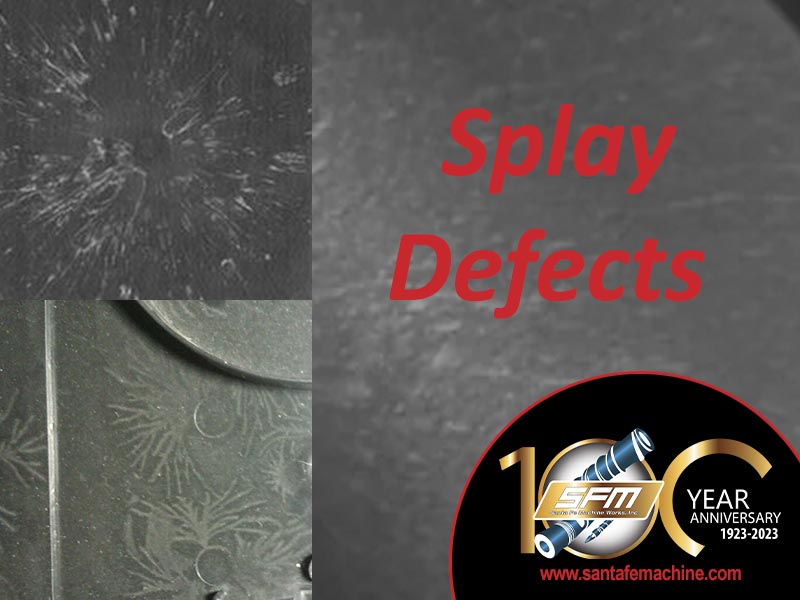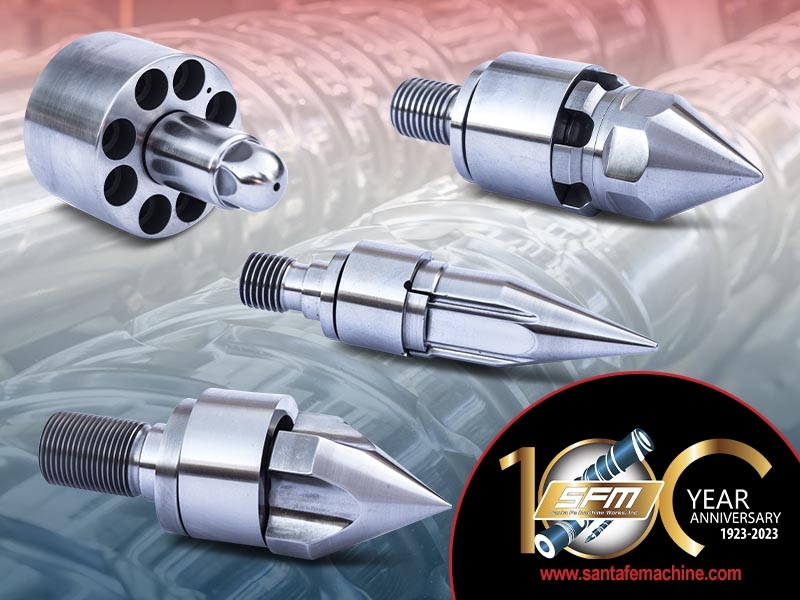Preventing Splay Defects in Injection Molded Parts
Splay defects in injection molded parts can be streaks, lines, or visible discoloration on the surface of the molded product caused by premature solidification of the plastic material before it fully reaches and fills the mold cavity. The term “splay” describes the radial streaks that extend from the gate area toward the outer edges of the molded part. This phenomenon typically results from the presence of moisture or contaminants in the plastic resin, leading to uneven material flow and premature cooling or improper injection design.
Why is splay a problem?
Splay defects pose significant challenges and concerns since they can adversely affect the final parts’ aesthetic quality and functional properties. The visible streaks and lines caused by splay defects mar the surface finish of the molded parts. This is particularly critical in industries where visual appeal and surface quality are crucial, such as consumer electronics or automotive components. The splay defects may also compromise the molded parts’ structural integrity and mechanical properties, potentially reducing their performance and lifespan. Addressing splay defects is essential to ensure the molded products meet stringent quality standards and customer expectations.
What can be done to prevent splay defects?
In order to reduce splay issues, several factors need to be considered. Keep in mind that each factor is heavily influenced by the specific material used, mold design, unique project process conditions, and more. However, addressing these concerns is a great place to start:
- Material Selection: Selecting a resin with a higher melt flow index (MFI) improves flowability and reduces the chances of premature solidification. It is also essential to ensure that the material used is free from contaminants or moisture, as these can contribute to splay defects.
- Mold Temperature: Maintaining the proper mold temperatures throughout the process can help reduce splay defects by promoting more even and controlled cooling of the plastic material.
- Injection Speed and Pressure: Optimizing injection speed and pressure settings can help improve the flow of the molten plastic and reduce the likelihood of splay defects.
- Gate Design: Proper gate design facilitates the smooth and controlled flow of the molten plastic into the mold cavity. Utilizing multiple gates to distribute the flow and reduce the risk of splay defects can be a good idea.
- Cooling Time: The cooling times must allow the plastic material to solidify at the proper rate within the mold.
- Mold Venting: Proper mold venting allows trapped air or gases to escape, preventing the formation of splay defects.
- Dry The Material: If there is a possibility that the plastic material has absorbed moisture, it must be properly dried before the injection molding process to prevent splay defects.
- Tooling Maintenance: Regular mold maintenance and cleaning can help prevent contamination and ensure smooth mold surfaces.
- Process Monitoring and Quality Control: Process monitoring systems that detect variations or anomalies in the injection molding process and regular quality control checks on molded parts can help identify and address any splay defects early in the production process.
- Proper valve design selection: Matching the correct valve design is critical in reducing the likelihood of problems with splay.
Investing time and resources in optimizing your injection molding process, selecting appropriate materials, and implementing preventive measures to minimize or eliminate splay defects will enhance the overall quality of your final molded parts.
How do our barrels and screws help minimize splay defects?
The right injection barrel and screw play crucial roles in minimizing splay defects during the injection molding process. The barrel and screw work together to melt, mix, and deliver the plastic material into the mold cavity. Our barrels help maintain consistent temperatures, preventing premature solidification of the plastic and ensuring that the material remains molten for a sufficient duration, allowing for uniform flow and filling of the mold. Our screws provide precise control over injection speed and pressure which is essential in preventing abrupt changes in flow that could contribute to splay defects. The screw geometry facilitates optimal mixing and homogenization of the plastic resin, reducing the likelihood of trapped air or uneven distribution of additives. This promotes a more uniform melt, enhancing the material’s flow properties.
A Family Tradition of Excellence For Over 100 Years!
The doors have been open at Santa Fe Machine Works, Inc. since 1923, and for the past 45 years, we have been dedicated solely to manufacturing and supplying new & rebuilt injection & extrusion screws, barrels & valves to the plastics industry. We also offer custom-tailored screw, barrel, and valve combinations, allowing our customer’s production goals to be met in the best, fastest, and most cost-effective ways possible. Our employees have over 200 years of combined experience in the plastics industry and are eager to support your specific extrusion or injection needs. Have a question, need assistance, or looking for a quote? Contact us today!


